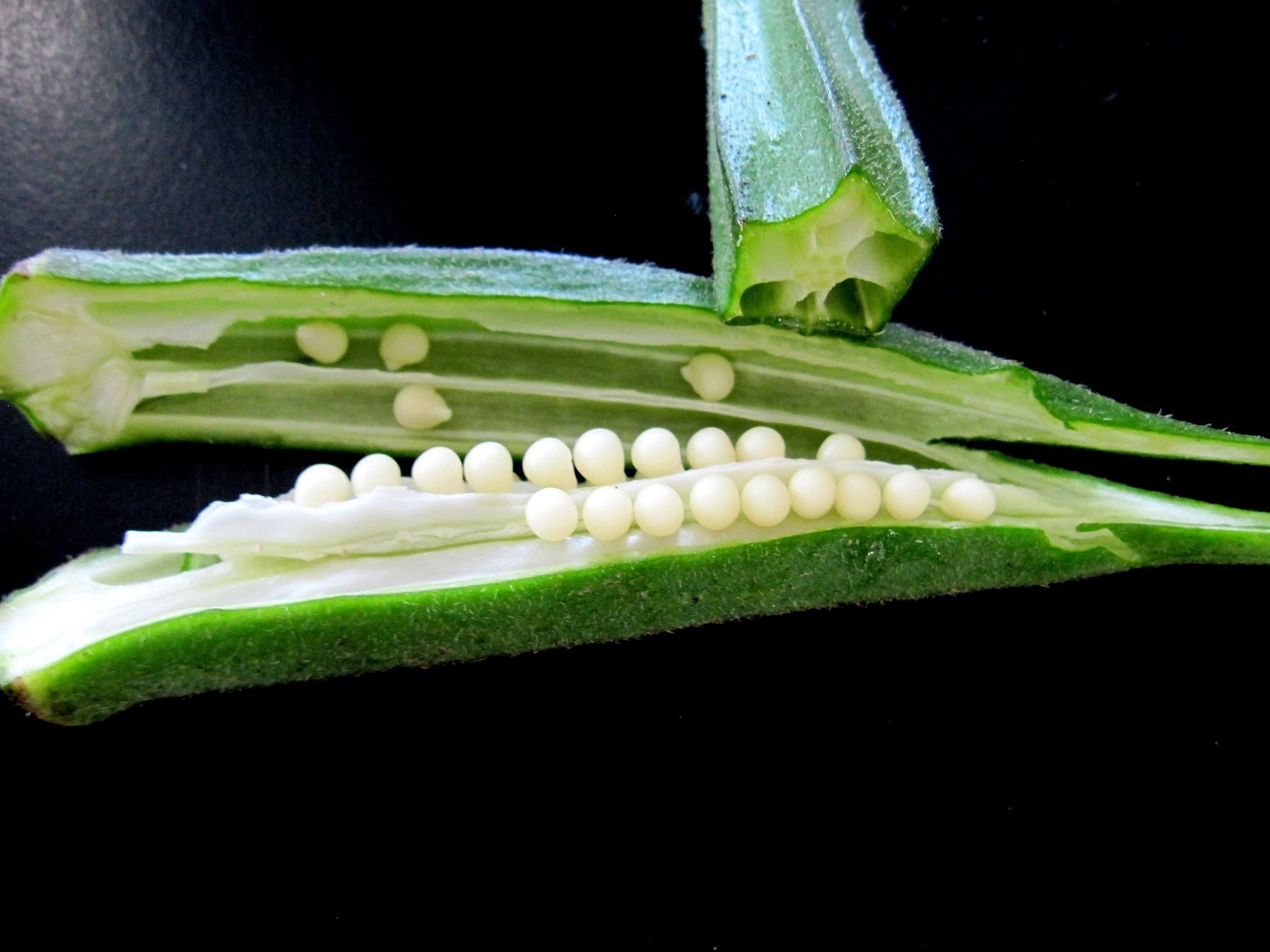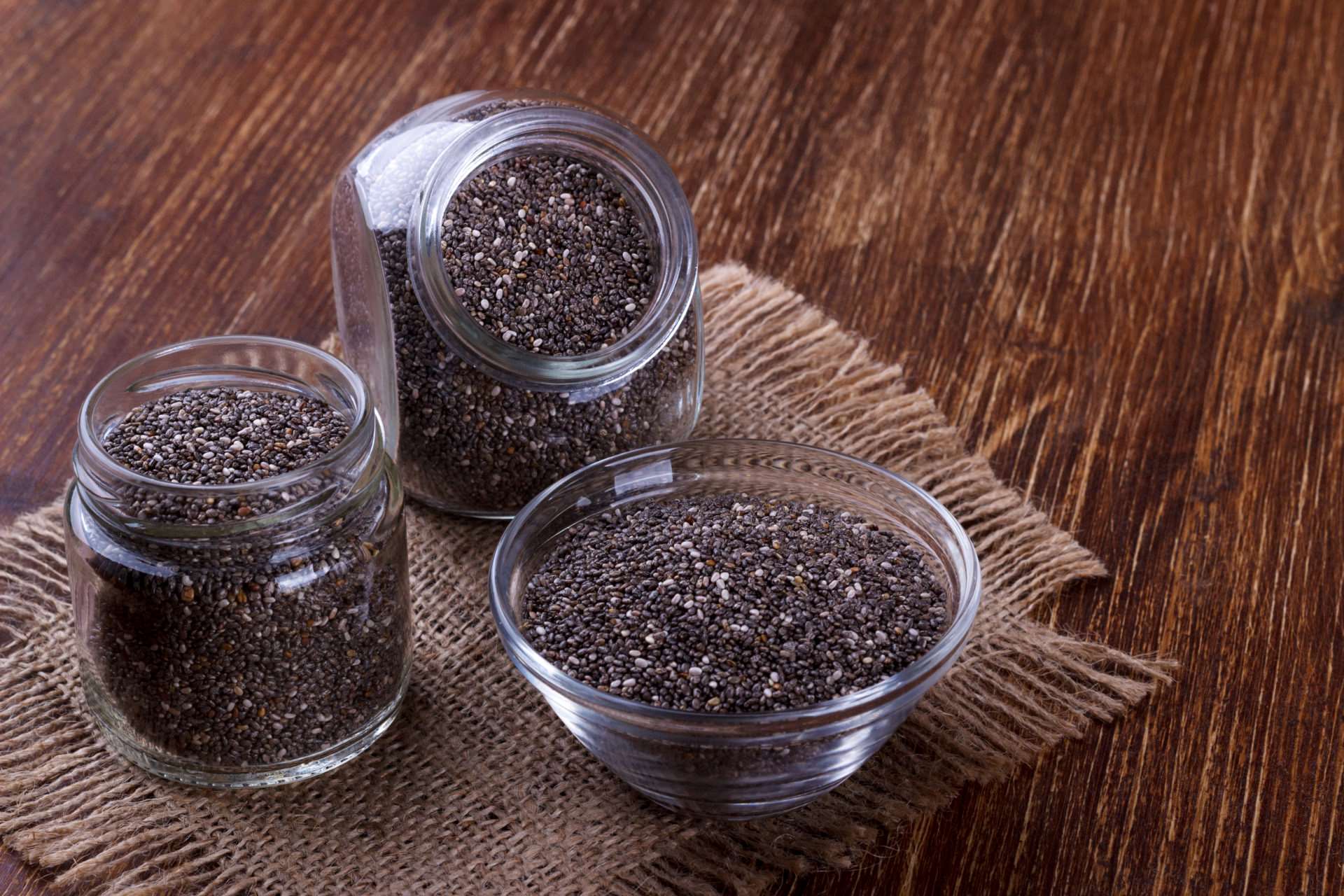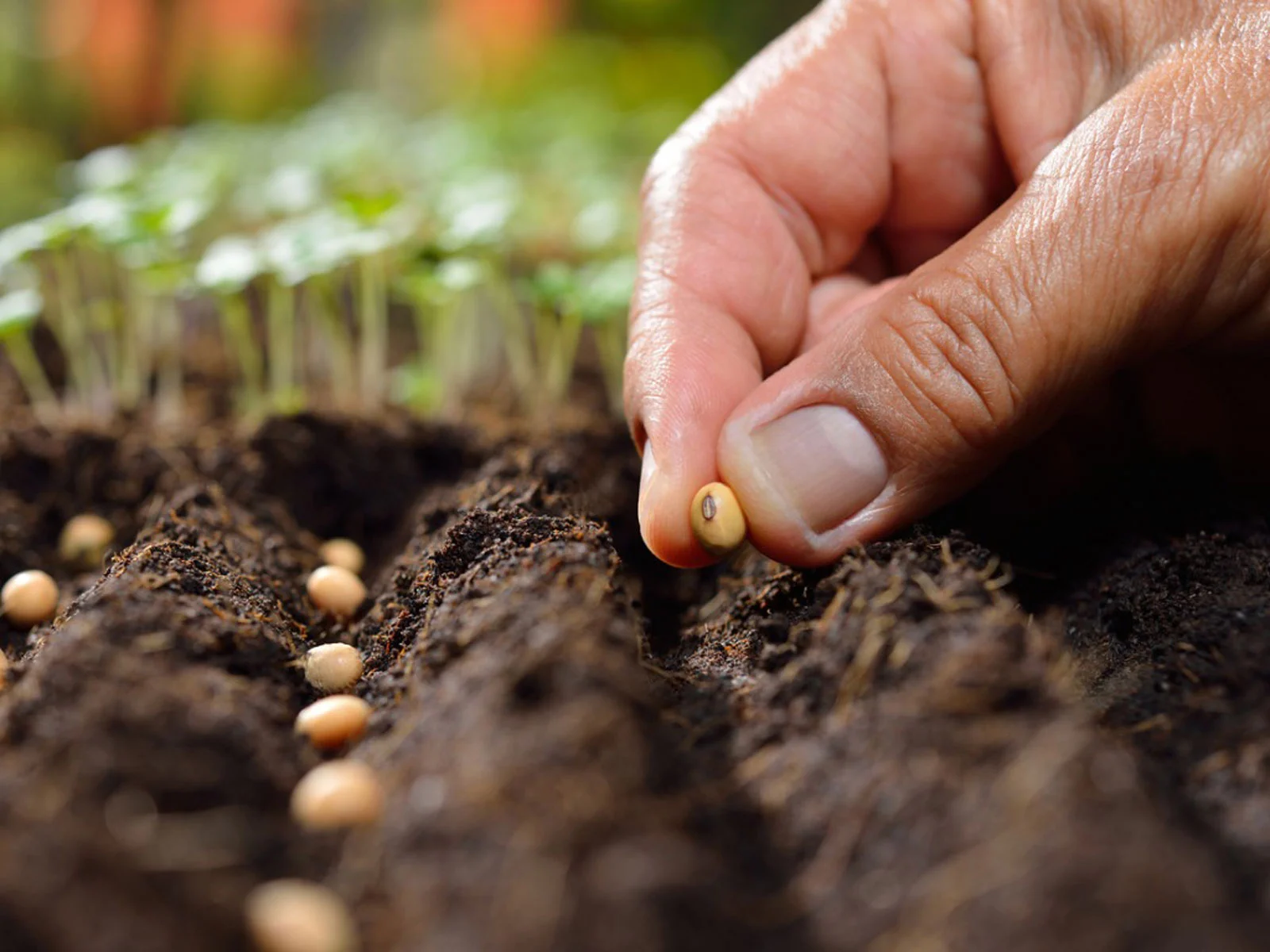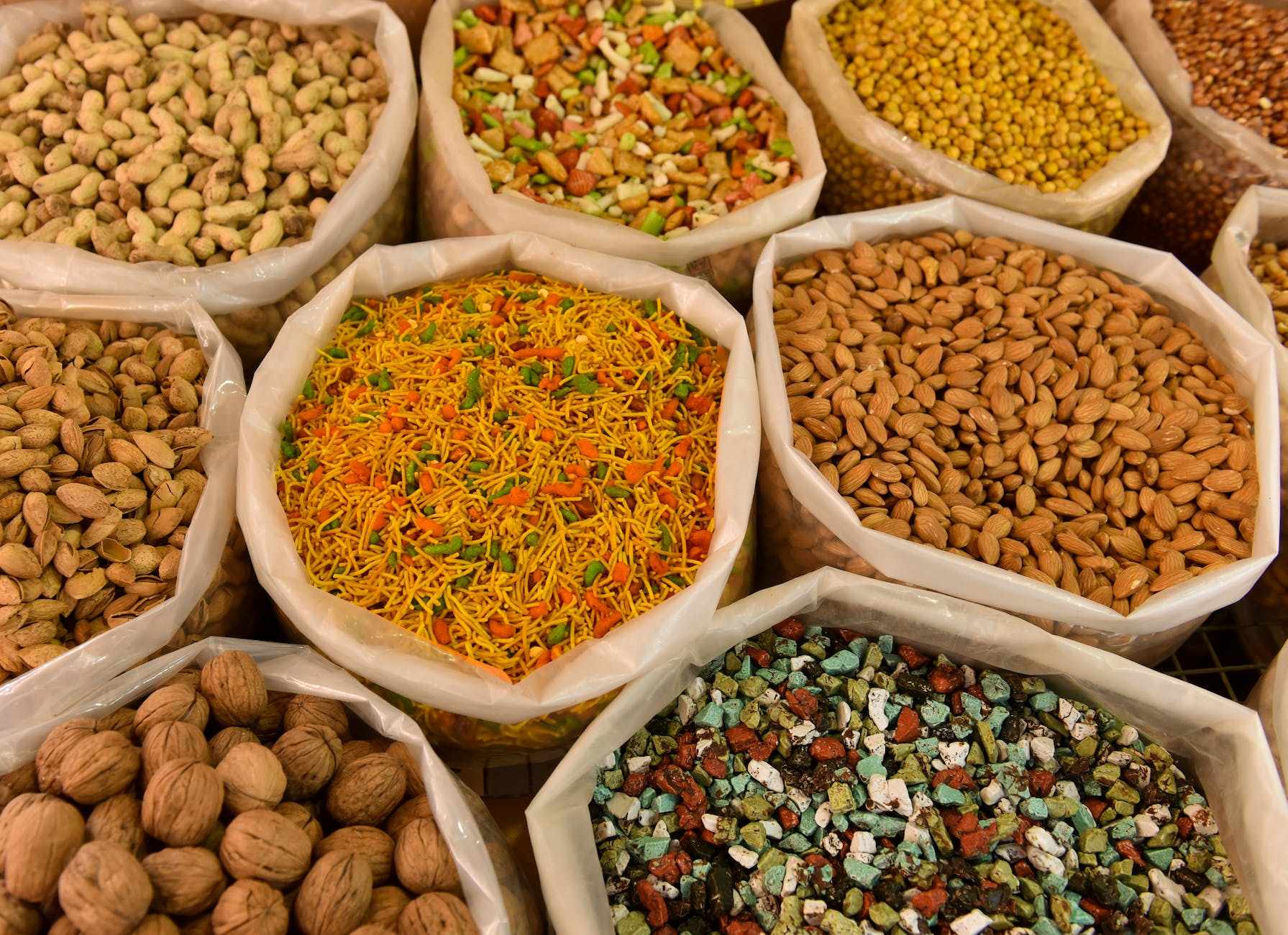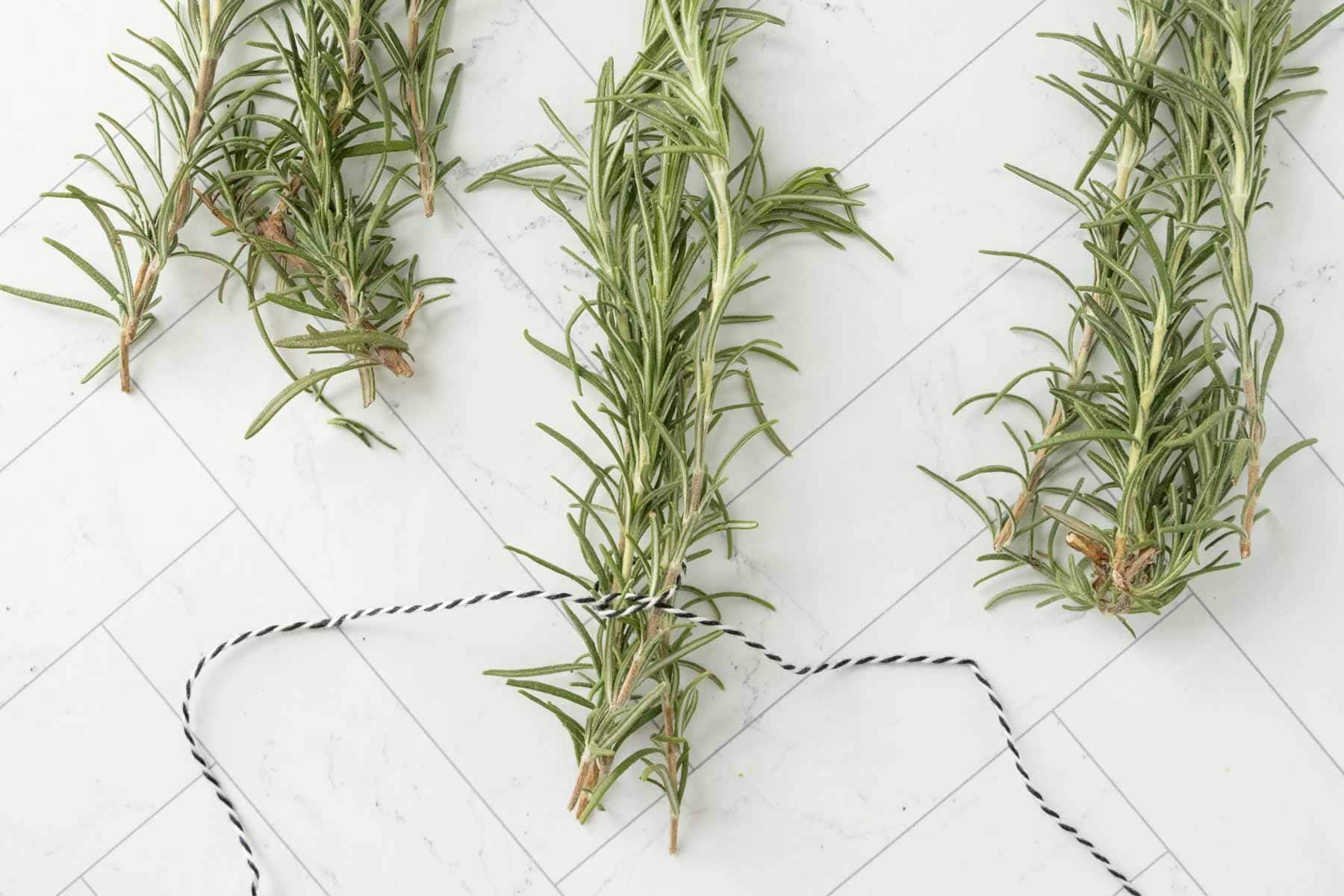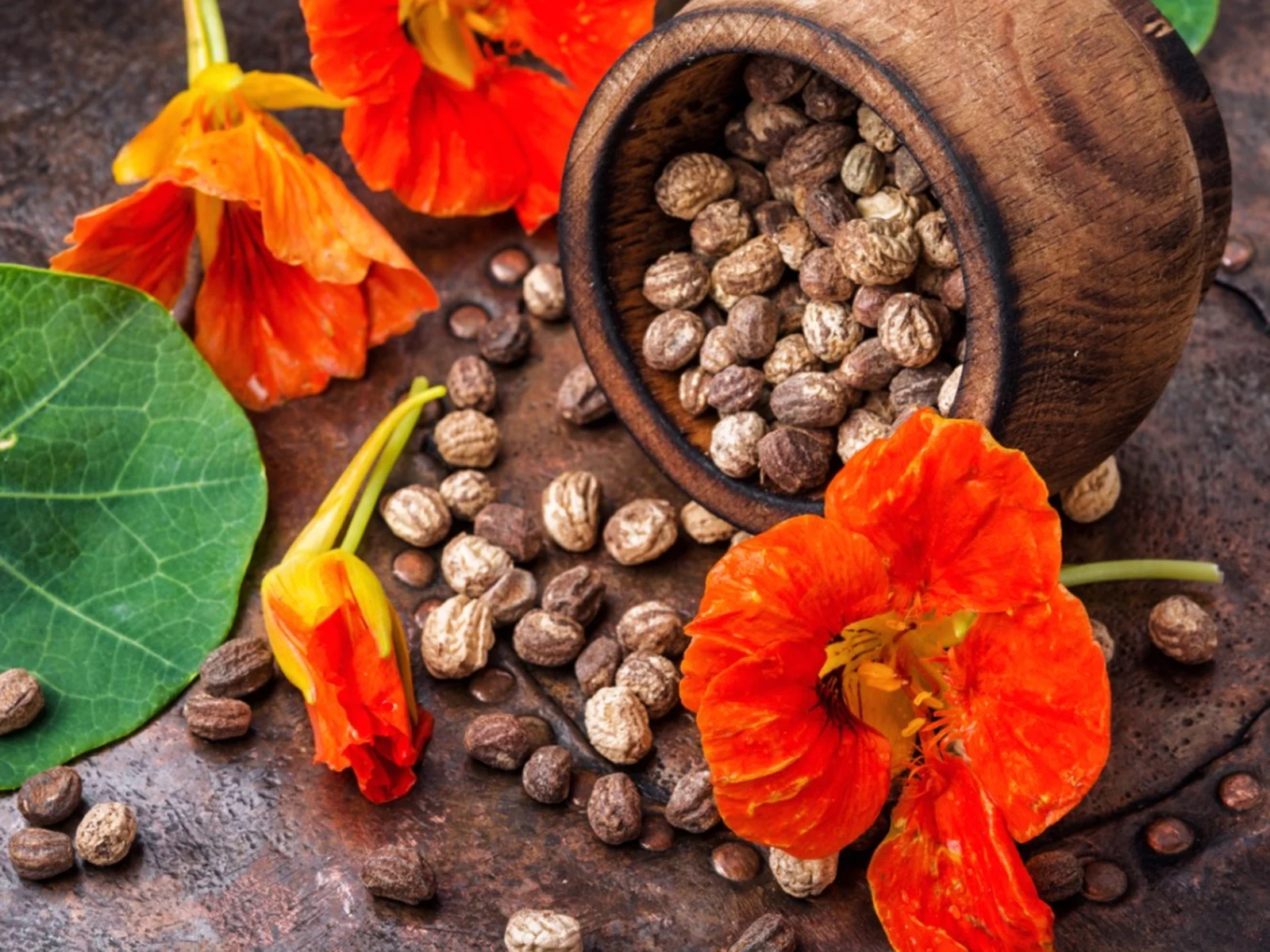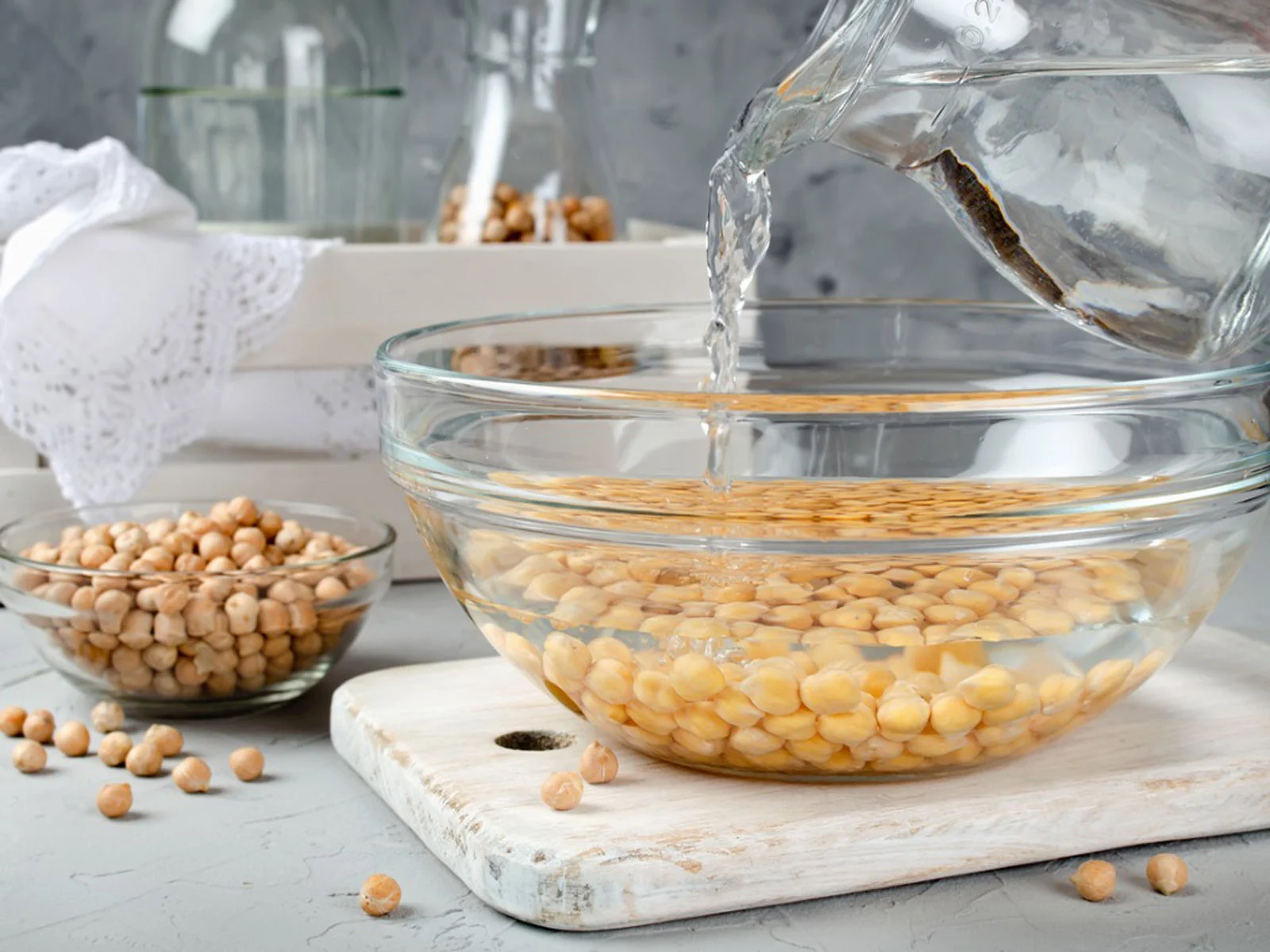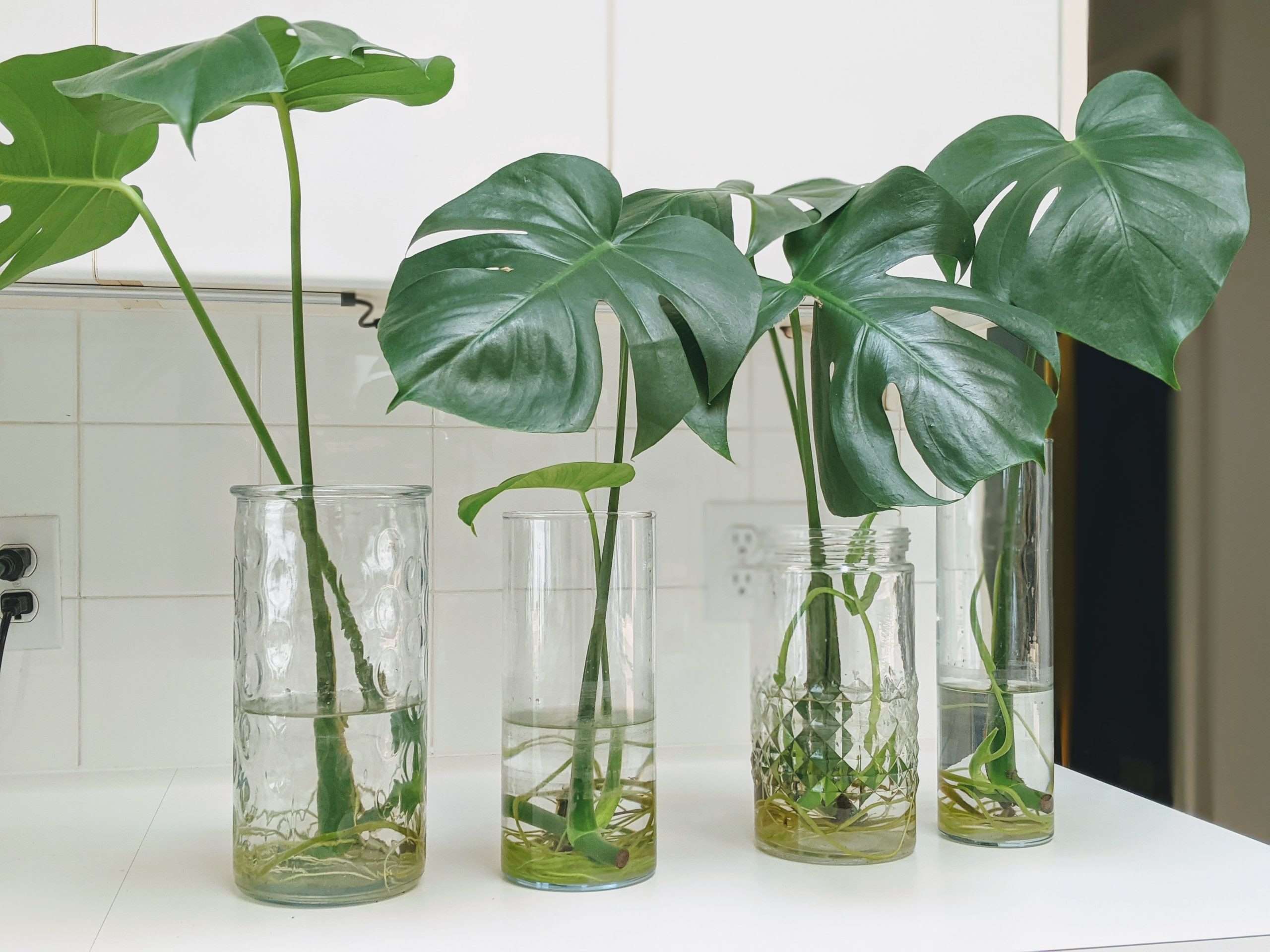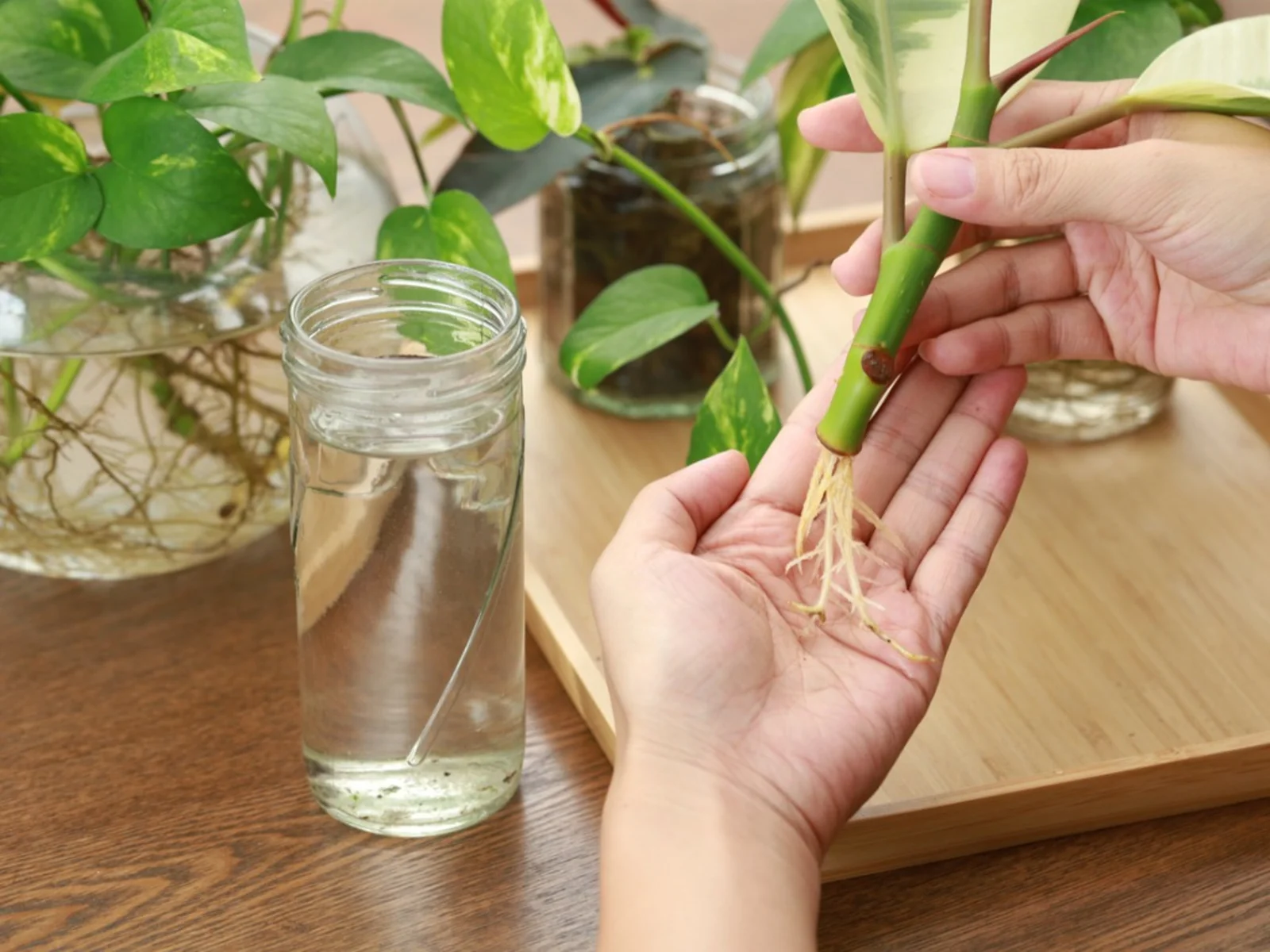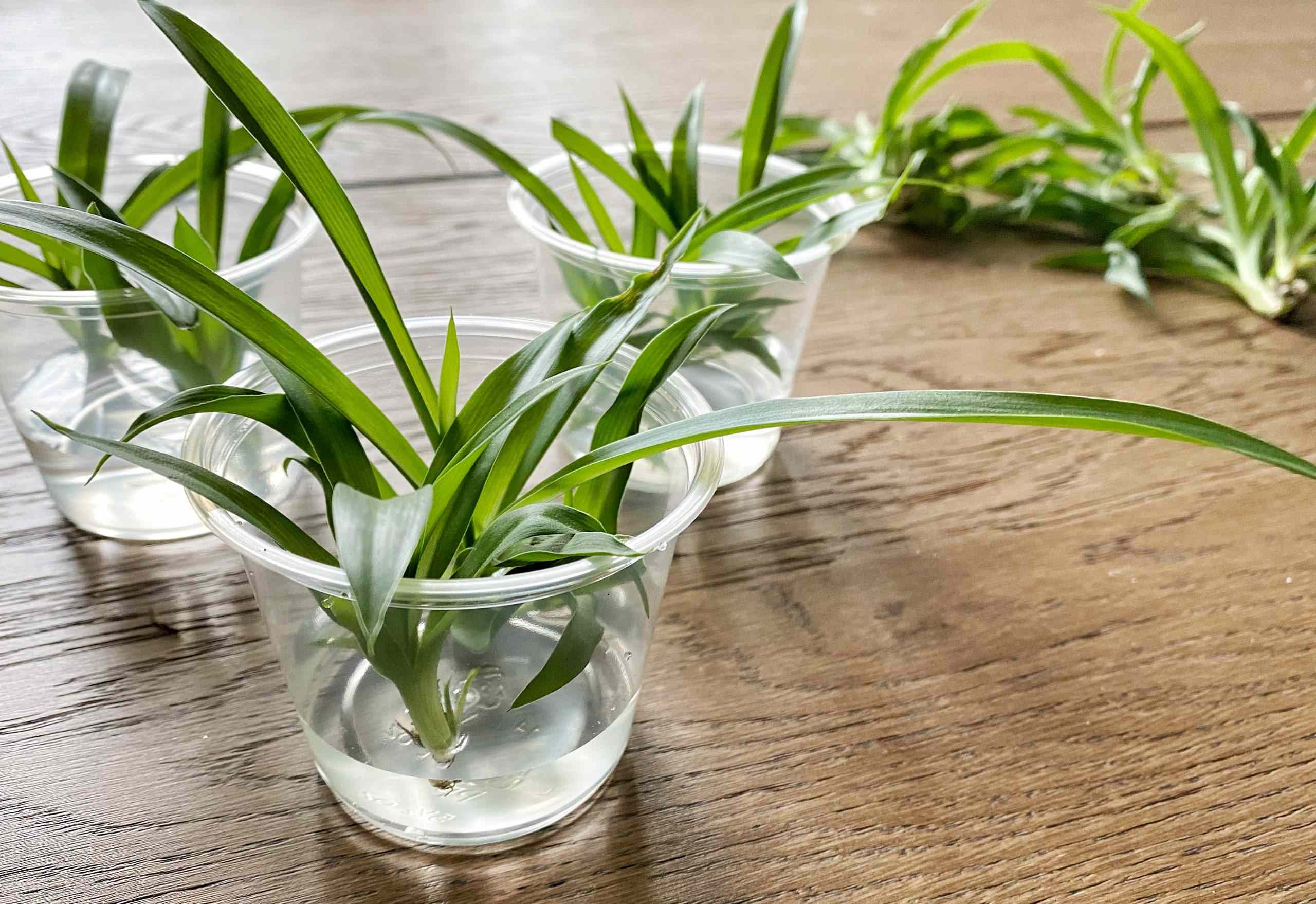Home>Types of Gardening>Edible Gardening>How Long Do You Dry Seeds Before Planting


Edible Gardening
How Long Do You Dry Seeds Before Planting
Published: August 27, 2023
Discover how long you should dry seeds before planting in your edible garden. Get expert tips and ensure successful growth for your plants.
(Many of the links in this article redirect to a specific reviewed product. Your purchase of these products through affiliate links helps to generate commission for Chicagolandgardening.com, at no extra cost. Learn more)
Table of Contents
Introduction
Welcome to the world of edible gardening! The joy of growing your own fruits, vegetables, and herbs is a rewarding and fulfilling experience. Whether you’re a seasoned gardener or just starting out, understanding the importance of properly drying seeds before planting is crucial for success.
When you think about it, seeds are like tiny packages of life. They contain all the genetic material needed to grow into a full-fledged plant. However, before they can sprout and flourish, seeds need to go through a drying process.
Drying seeds before planting serves multiple purposes. First and foremost, it helps to ensure the longevity and viability of the seeds. By removing excess moisture, the seeds become more resilient and less prone to rot or mold. Additionally, proper drying allows for easier storage, making it convenient to keep seeds for future use.
Furthermore, drying helps to prevent seed dormancy and promotes germination. Many seeds have a natural dormancy period, where they remain inactive until conditions are optimal for growth. Drying helps to break this dormancy and triggers the seed to sprout when planted in suitable soil.
So, how long should you dry your seeds before planting them? The answer varies depending on several factors, which we will explore in the following sections. By understanding these factors and adopting the right methods, you can ensure the success of your edible garden right from the start.
Why is it important to dry seeds before planting?
Drying seeds before planting is an essential step in the seed-saving process and plays a crucial role in the success of your edible garden. Here’s why it’s important:
1. Longevity and Viability: Removing excess moisture from seeds helps to prolong their lifespan. Moisture can lead to seed deterioration, making them less likely to germinate and grow. By drying seeds properly, you increase their chances of remaining viable for longer periods, ensuring that you have usable seeds for future plantings.
2. Disease Prevention: Seeds can carry pathogens or fungi that can cause diseases in plants. By drying the seeds, you create an unfavorable environment for these microorganisms to thrive. Drying helps to kill or inhibit the growth of such pathogens, reducing the risk of diseases in your garden.
3. Storage Convenience: Once seeds are dry, they become easier to store. Properly dried seeds can be stored in airtight containers in a cool, dry place for an extended period without losing their viability. This allows you to plan ahead, store surplus seeds, and have a constant supply of seeds for successive plantings.
4. Dormancy Breakage: Some seeds have a natural dormancy period, a period of inactivity that prevents them from germinating immediately after harvesting. Drying the seeds helps to break this dormancy and prepare them for germination when conditions are right. It signals to the seed that it’s time to start growing and encourages faster and more uniform germination.
5. Germination Enhancement: Drying seeds promotes even moisture absorption, allowing them to germinate more effectively. If seeds contain too much moisture, they may struggle to take in water from the soil, hindering the germination process. Proper drying ensures that seeds are in the optimal state to absorb water and kickstart the germination process.
6. Consistency: Drying seeds before planting brings consistency to the process. By removing excess moisture, you create a standardized starting point for all your seeds. This reduces variations in germination time and ensures a more uniform growth pattern in your garden.
By understanding the importance of drying seeds before planting, you can set yourself up for a successful edible garden. In the following sections, we will explore the optimal drying time and methods to ensure that your seeds are ready to flourish.
How long should seeds be dried before planting?
The drying time for seeds can vary depending on the type of plant and the specific environmental conditions. While there is no one-size-fits-all answer, there are general guidelines to help you determine the optimal drying time for your seeds.
As a general rule of thumb, most seeds should be dried for a period of 1 to 3 weeks before planting. However, some seeds may require longer drying times, while others may need less. It’s important to consider the following factors when determining the appropriate drying time:
1. Seed Size: Larger seeds generally require more time to dry compared to smaller seeds. The larger the seed, the more moisture it may contain, necessitating a longer drying period.
2. Seed Moisture Content: Different seeds have varying moisture content levels when harvested. Some seeds may naturally contain more moisture than others. It’s essential to monitor the moisture content and adjust the drying time accordingly.
3. Environmental Conditions: The drying time can be influenced by the surrounding environmental conditions, such as temperature and humidity. Seeds dry faster in warm and dry conditions. If the humidity levels are high, it may take longer for the seeds to dry properly.
4. Seed Maturity: Seeds need to be fully mature before drying to ensure their viability. Immature seeds may not have reached their maximum moisture content and may require additional time on the plant before they can be harvested and dried.
5. Seed Type: Different plants have different drying requirements. Research the specific drying recommendations for the type of seeds you are working with to ensure the best results.
To determine if your seeds are adequately dried, there are a few indicators to look for:
1. Feel: Seeds should feel hard and dry to the touch. If they feel soft or flexible, they may still contain too much moisture and require further drying.
2. Sound: Dry seeds often make a distinct rattling sound when shaken. This indicates that the seeds are not retaining excess moisture.
3. Weight Loss: If you have access to a scale, you can weigh your seeds before and after drying. A significant reduction in weight indicates successful drying.
Remember, it’s always better to err on the side of caution and dry seeds for a slightly longer period rather than risk planting them too soon. Properly dried seeds will enhance their chances of successful germination and ultimately lead to healthier plants in your edible garden.
Factors affecting drying time
Several factors can influence the drying time of seeds. Understanding these factors can help you adjust your drying methods and ensure optimal conditions for successful seed drying. Here are some key factors to consider:
1. Seed Size and Density: Larger seeds with denser structures generally take longer to dry compared to small or lightweight seeds. The larger the seed, the more time it will require to reach the desired moisture content.
2. Seed Moisture Content: The initial moisture content of the seeds when harvested can affect the drying time. Seeds with higher moisture content will take longer to dry compared to seeds with lower moisture content.
3. Environmental Conditions: The drying time can vary depending on the surrounding environmental conditions. Factors such as temperature, humidity, and airflow can significantly impact the drying process. Seeds dry faster in warm and dry conditions, while high humidity levels can prolong the drying period.
4. Seed Maturity: The maturity of the seeds at harvest plays a role in their drying time. Seeds that are harvested when fully matured tend to have lower moisture content and will dry more quickly than immature seeds.
5. Seed Coating or Husk: Some seeds come with a protective coating or husk that can slow down the drying process. These coatings can create a barrier, preventing moisture from escaping and prolonging the overall drying time.
6. Seed Species: Different types of seeds have varying characteristics and will dry at different rates. It’s essential to research the specific drying requirements for the seeds you are working with to ensure successful drying.
7. Drying Method: The method you choose to dry your seeds can also influence the drying time. Air drying, using a dehydrator, or utilizing low-temperature ovens or seed dryers can all impact the speed at which seeds dry.
8. Seed Storage Conditions: If you store seeds in a humid environment or without proper air circulation before drying, they may absorb moisture and require additional drying time.
9. Seed Quality: The quality and viability of the seeds can also affect the drying time. Healthy, high-quality seeds tend to dry more efficiently compared to seeds that are damaged or have poor health.
To ensure successful seed drying, it’s important to take these factors into account and adjust your drying methods accordingly. Regularly check the progress of the drying process, monitor the moisture content of the seeds, and make any necessary adjustments to achieve the optimal drying time for your specific seeds.
Methods to dry seeds before planting
There are various methods you can use to effectively dry seeds before planting. The choice of method depends on factors such as the type of seed, available resources, and personal preference. Here are some commonly used methods:
1. Air Drying: Air drying is one of the simplest and most cost-effective methods for drying seeds. Place the seeds in a single layer on a clean, dry surface, such as a tray or a fine mesh screen. Choose a warm, well-ventilated area with low humidity. Allow the seeds to air dry naturally, stirring them occasionally to ensure even drying. This method is suitable for large seeds with low moisture content.
2. Dehydrator: Using a food dehydrator is an efficient way to dry seeds. Spread the seeds in a single layer on the dehydrator trays and set the temperature to the lowest setting. Allow the seeds to dry for the recommended time, periodically checking their moisture content. Dehydrators offer controlled temperature and airflow, making them suitable for faster and more consistent drying.
3. Low-Temperature Oven: Another option is to use a low-temperature oven for seed drying. Place the seeds on a baking sheet lined with parchment paper and set the oven to the lowest possible temperature, preferably around 100°F (38°C). Keep the oven door slightly ajar to allow moisture to escape. Regularly check the seeds and rotate the trays for even drying. This method is useful for seeds that require gentle drying at a controlled temperature.
4. Seed Dryers: Seed dryers are specifically designed for seed drying and provide optimal conditions for efficient drying. These devices control temperature, humidity, and airflow to ensure proper drying without damaging the seeds. Seed dryers are available in various sizes and can be a suitable option for gardeners or seed savers who frequently dry seeds.
5. Silica Gel: Silica gel, a desiccant that absorbs moisture, can be used to dry seeds. Place the seeds in an airtight container with a small pouch of silica gel. Ensure that the silica gel does not come into direct contact with the seeds. Seal the container tightly and store it in a cool, dry place. Avoid using this method for a large quantity of seeds, as it may not be as practical or cost-effective.
Remember, regardless of the method you choose, it’s essential to regularly monitor the drying progress and ensure that the seeds are completely dry before storing or planting. Properly dried seeds will have a hard, dry outer shell and will not feel soft or flexible.
By selecting the appropriate drying method and following the recommended guidelines, you can ensure that your seeds are ready for successful germination and contribute to a thriving and bountiful edible garden.
Common mistakes to avoid when drying seeds
While drying seeds may seem like a simple process, there are a few common mistakes that can hinder successful drying and ultimately impact the viability of your seeds. By being aware of these mistakes, you can ensure that you avoid them and maximize the chances of successful seed drying. Here are some mistakes to avoid:
1. Insufficient Drying Time: One of the most common mistakes is not allowing enough time for the seeds to dry properly. Seeds may feel dry on the outside but may still contain moisture inside. It’s important to follow the recommended drying time, and if unsure, opt for slightly longer drying periods to ensure thorough drying.
2. Excessive Drying Time: On the other hand, excessive drying can also be detrimental to the seeds. Over-drying can cause the seeds to become brittle and reduce their viability. Pay attention to the recommended drying times and avoid over-drying the seeds.
3. Inadequate Airflow: Proper airflow is essential during the drying process to prevent the seeds from becoming stagnant and developing mold or rot. Avoid overcrowding the seeds, as this can hinder airflow. Ensure sufficient space between seeds or use a fan to promote air circulation during drying.
4. High Humidity Levels: Drying seeds in an area with high humidity can prolong the drying time and increase the risk of mold or fungal growth. Choose a dry environment or use a dehumidifier to lower the humidity levels and facilitate faster drying.
5. Improper Storage Conditions: Storing seeds in a humid or damp environment before drying can lead to moisture absorption and compromise the drying process. Ensure that seeds are stored in a cool, dry place with good airflow prior to drying.
6. Ignoring Seed Maturity: Harvesting seeds prematurely can result in higher moisture content and longer drying times. Allow the seeds to fully mature on the plant before harvesting them for drying to ensure optimal drying conditions.
7. Not Labeling or Organizing Seeds: Failing to label or organize seeds during the drying process can lead to confusion and mix-ups. Keep track of the different seed varieties and label them accordingly to prevent any confusion when it comes time to plant.
8. Poor Seed Handling: Rough handling of seeds during the drying process can damage their viability. Handle the seeds with care, avoiding any unnecessary squeezing or crushing that could affect their inner structure.
By avoiding these common mistakes, you can ensure that your seeds are dried properly and maintain their viability for successful germination and planting in your edible garden.
Conclusion
Properly drying seeds before planting is a crucial step in the process of growing a successful edible garden. It not only ensures the longevity and viability of seeds but also promotes germination and overall plant health. By understanding the importance of drying, considering the factors that affect drying time, utilizing the appropriate drying methods, and avoiding common mistakes, you can set yourself up for gardening success.
Remember to take into account the size and moisture content of the seeds, environmental conditions, seed maturity, and appropriate drying methods. Air drying, using a dehydrator, low-temperature ovens, or specialized seed dryers are all effective methods to dry seeds. Avoid common mistakes such as insufficient or excessive drying time, inadequate airflow, high humidity levels, and poor seed handling.
Properly dried seeds will have a hard, dry outer shell and will be ready for long-term storage or immediate planting. Always test the moisture content, feel, and weight loss of the seeds to ensure their readiness. By dedicating the time and attention to properly drying your seeds, you are setting yourself up for a successful and abundant edible garden.
Now that you understand the importance of drying seeds before planting, you are well-equipped to embark on your edible gardening journey with confidence. Enjoy the process of growing your own fruits, vegetables, and herbs, and reap the rewards of a bountiful and thriving garden.
